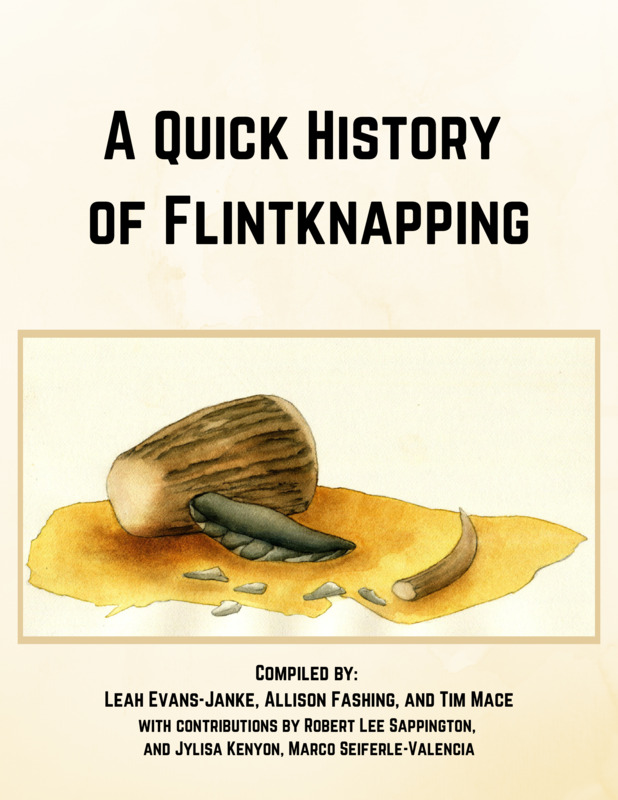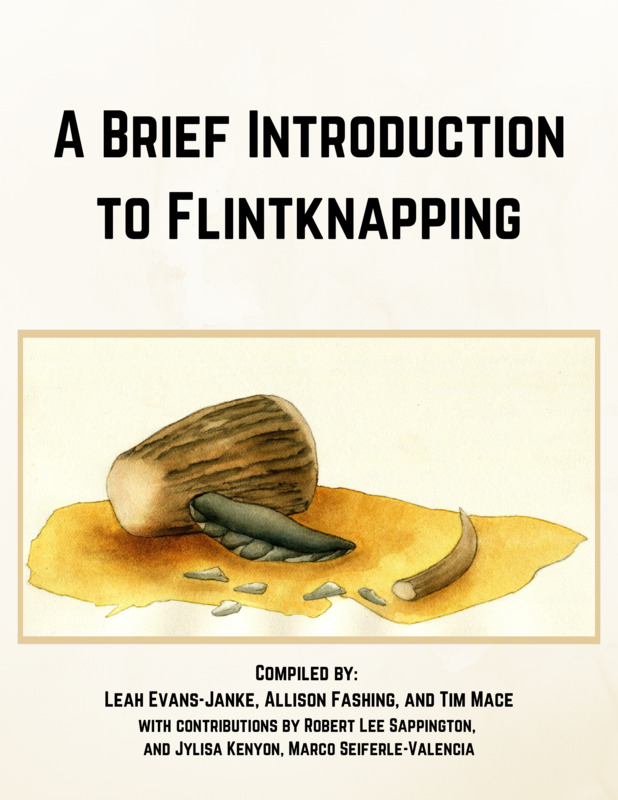Learn More About Flintknapping
Contents: Native Flintknappers Online | At U of I | Flintknapping for Kids | Experimental Archaeology | Respecting Cultural Heritage
Native Flintknappers Online
Flintknapping has a complicated presence on the internet, perhaps especially for those uninitiated into the topic. On the positive side, Native and Indigenous cultural heritage experts around the globe are using the advent of digital media to share their flintknapping perspectives and practices on platforms like YouTube and TikTok, and Instagram reels. On the negative side, social media marketplaces like Facebook marketplace can supercharge the ease with which illegally or unethically sourced points, tools, and stones can be sold and traded.
Noel Grayson, Cherokee, is a great example of how digital storytelling can be part of culture keeping. Noel is an enrolled member of the Cherokee Nation, and was given the honorary title of Cherokee National Treasure in 1998, a special honor reserved for artisans and culture keepers. Grayson has created a number of videos showcasing his flintknapping practice, and explaining flintknapping facts and cultural contexts, like how tools will be used once they’re made.
Other Indigenous creators are using platforms like TikTok or Instagram to showcase their flintknapping practice, as well as sharing cultural knowledges and contexts. Chumash artist Steve Kulupeč Saffold, who has an instagram handle under “truetotradition”, which has almost 50k followers, is a great example. Saffold showcases beautiful bifaces, projectile points, and other creations he makes by flintknapping and other traditional arts practices.
Flintknapping at the University of Idaho
In addition to containing the world class Crabtree Collection, the University of Idaho is also home to present day experts in flintknapping like our very own Professor Emeritus Lee Sappington, PhD. Below is a short clip where Professor Sappington demonstrates the basics of flintknapping.
Be sure to watch part II of the demonstration in the collection.
Flintknapping for Kids and Youth
Want to learn more about flintknapping? Take a look at “A Quick History of Flintknapping” and “A Brief Introduction to Flintknapping,” compiled by Leah Evans-Janke, Allison Fashing, and Tim Mace.
Another great learning opportunity is to participate in events like the Wanapum Heritage Center’s Annual Archaeology Days. Visit the Archaeological Institute of America to find similar events in your state.
The History of Flintknapping and Experimental Archaeology
History of Flintknapping:
- History of Flintknapping with Steven Kulupeč Saffold. - Chumash artist Steven Kulupeč Saffold discusses the history of flintknapping.
- 4 Iconic Paleolithic Tools You Thought You Knew… - A more technical discussion that is still good for beginners about common groups or types of tools.
Learning about experimental archaeology:
- Northeast Archaeology Lab with Dr. Bonnie Newsom - A video tour of the Northeast Archaeology Lab with Dr. Bonnie Newsom, who is also an advisory board member on the Crabtree grant.
- Recreating our past: 10,000 year old mesolithic dwelling replicated by experimental archaeologists - video.
- How Archaeologists Are Literally Recreating the Past, Experimental Archaeology - video.
Ethics of experimental archaeology:
- Exploring the Ethics in Experimental Archaeology - Ep 73: Heritage Voices (4/25/2023) - A podcast discussion with members of the project Advisory Board about the ethics of experimental archaeology and the digitization of the Crabtree Lithic Technology Collection.
Respecting Cultural Heritage While Flintknapping
Issue Editors: What do you want archaeologists and collectors to know to move collaborative practice forward?
Alan D. Kelley: Everyone collecting artifacts, whether as an archaeologist or a collector, should treat artifacts with respect as potentially sacred items. Think about why they were left behind. What were the social and political contexts during loss or that caused the artifact to be left behind? Recognize that abandonment of some stuff maybe was not the choice of the people but was forced by circumstances or pressures on them. Remember that these artifacts belonged to someone else from another time and had importance in their lives. It would be better if collectors recorded where they found things but left them alone.
Existing federal statutes and international treaties are woefully incomplete and often ineffective at preventing the escalation of looting on Indian reservations, public or private lands, and they are completely inadequate when it comes to halting private land foraging. Diggers on private lands need only the landowner’s permission. Sacred items and even the remains of ancestors and their burial belongings continue to be sold in the “art” market, without any notification of the affected tribes. Auctioneers and traders of “antique” Indian art claim that they need tribes to furnish lists of what constitutes their sacred items. Otherwise, we are told, these dealers have no way of knowing how to make such determinations on their own. This is both specious and disingenuous. The high market value the collectors place on these items is indicative of their special attributes of spirituality. Traders cannot claim ignorance and, at the same time, benefit from the “perception” of sacredness.
Finding high-quality rock for making points became an obsession, too. Over the years, I have hauled in a massive quantity of rock! There are some ethics to harvesting good flaking rock so that the archaeological record isn’t damaged or contaminated—we don’t want to create new sites. Moreover, flintknapping should never be done on or near sites. Most places with high-quality flaking stone today were also used in the past, and are covered with artifacts from the quarrying process. Collecting material people used and discarded in the past, or striking flakes into such materials, destroys the archaeological record. So, I collect in rivers and washes that have exposed new, unworked material. I test cobbles in washes or rivers that have no context, as everything is washed away when it floods.
So… Can I Pick up the Arrowhead?
The short answer: you can pick it up, take pictures of it, and take a waypoint to share with an archaeologist, but you can’t take it home with you, especially if you’re like me and mostly hunt on state- or federally-owned lands. Rock art, whether painted or incised, should never be touched; the oils from our hands can damage the panel both instantly and over time.


